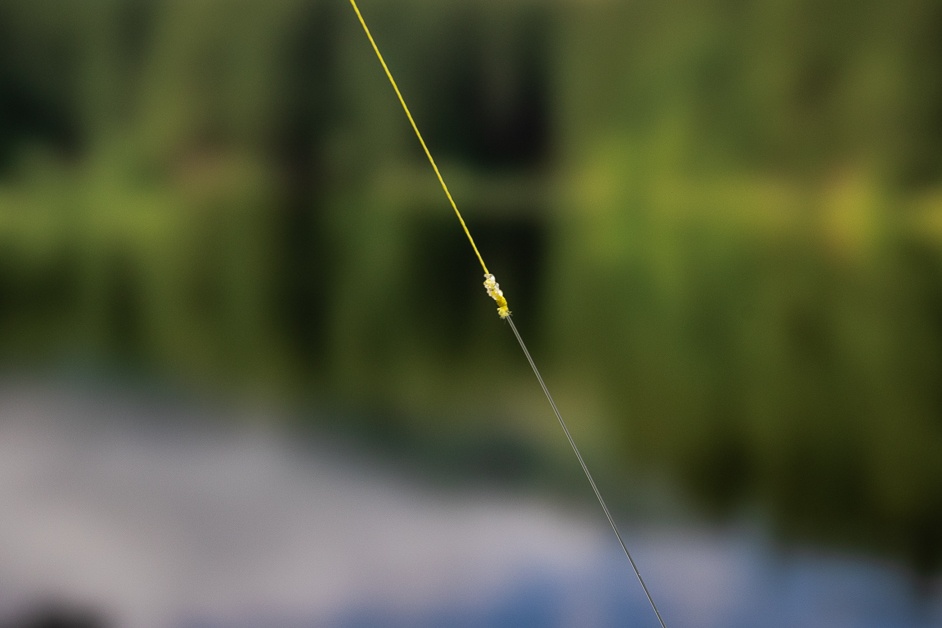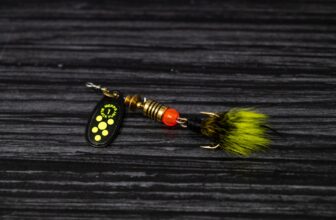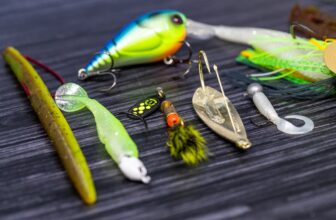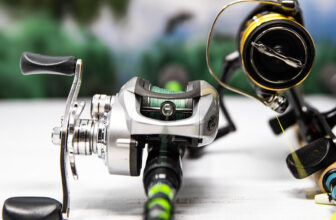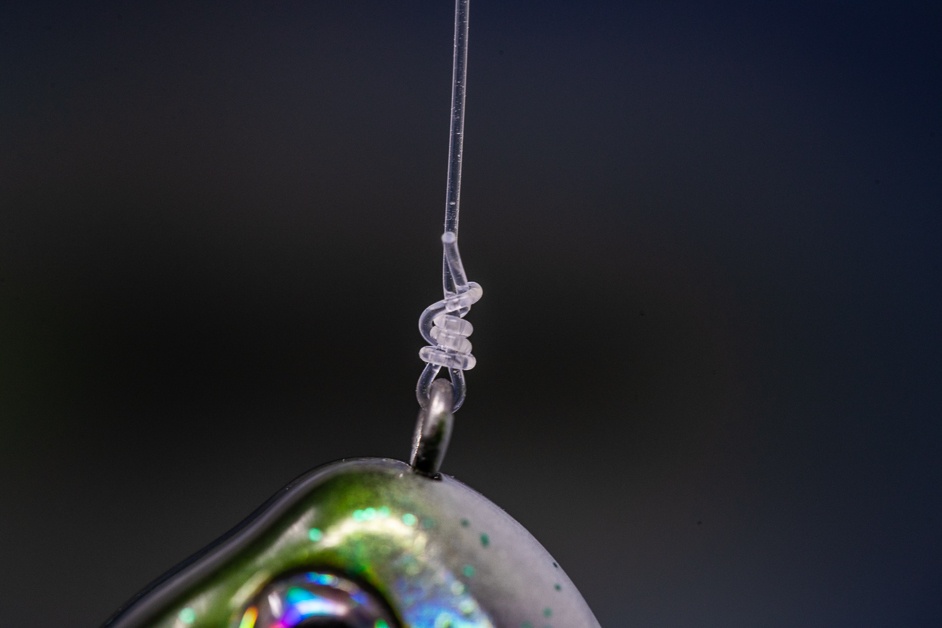
Discover why the uni knot, paired with the double uni knot or uni to uni knot is the best fishing knot to master and only one you may ever need to know!
Are all fishing knots created equal? Afraid not, according to most fishing experts. When it comes to the best types of fishing knot, it turns out that there are some that are better than others.
And that’s where the uni knot comes in. Easy to tie and quick to master, it’s a reliable fishing knot that can come in handy when you need it.
What is the Uni Knot?
The uni knot is one of the most popular types of fishing knot. It is multi-purpose, allowing a fisherman to tie their fishing line to a reel’s arbor, to attach different snaps and lures, as well as joining lines together. It’s preferred by many fishermen for its strength and for bass fishing should be all you ever need, paired with the double uni knot (or uni to uni knot) for when using a leader line.
Want a cheat sheet? Check out the Fisherman’s Ultimate Knot Guide for quick reminders and assistance out on the lake!
Why Use a Uni Knot
It can do it all
When it comes to fishing, you’re going to need knots for tying on a hook, swivel or other hardware and the uni knot can handle that, but what about when you need to attach let’s say a fluoro or mono leader line to a braid line or something similar? This is where the uni knot really shines, because it can be used for both, and learning one knot can get you through 99% of fishing, especially for bass.
It’s an easy knot to tie
Learning to tie different types of knots can develop a confident and capable fisherman, but it’s good to have some simple knots up your sleeve to allow for fast and effective knot tying.
You should be able to master the uni knot in no time, giving you a strong basic knot to benefit your efforts.
It can be Tied Quickly
As you can see from the videos above, there are only a few steps involved in trying a uni knot. This is why it’s particularly popular with beginners. Over time, you can learn how to tie this knot quickly, putting it to good use when needed.
It’s strong
One of the reasons why people prefer the uni knot is that it’s very strong and durable. If tied correctly, it has a strength rating of 90%. Compared to knots that take longer to tie, this is a good value knot that adds enough strength when you need it most.
It’s good for low-light conditions
When you’re fishing in low-light conditions or your eyes aren’t what they used to be, a uni knot can be a very handy knot to learn how to tie. You should be able to learn to tie this knot without having to look too closely, making it a perfect knot for different conditions.
It uses very little tippet
A uni knot uses relatively little tippet, which does have various benefits. It means your line will last longer, and using less tippet will save you money having to replenish your stocks.
It’s multi-purpose
The uni knot isn’t just a good knot for tying your fly, it has other uses too. You can use a uni knot to secure backing to a reel, and you may discover other useful uses for it too. If you choose to use a uni to uni or double uni knot, you can connect two lines together like a fluoro or mono leader when the need arises.
It’s easier to detangle
Fishing line tangles, that’s a fact of life. Being able to untangle knots quickly can save you some time, but it often means having to retire the knot and starting again. But with a uni knot, the right technique can allow you to unpick any knots without having to completely undo your knot, saving you a lot of time, and meaning you can resume fishing activities sooner.
It’s the professionals’ choice
Fishermen will soon identify their favorite fishing items, leaning towards a preference for lines, reels, and of course, knots. There are many people who state that the uni knot is their favorite, because of its strength and how easy it is to tie.
Because of its 90% strength rating, the uni knot is a preferred choice for a lot of people. It’s also a go-to knot for people who go fishing in a range of conditions and need to put a knot together in a hurry.
How to Tie a Uni Knot
- Take around six inches of your line and run it through your lure/hook. You can also hook it around any other objects you want to connect to.
- Fold your line over to double it, leaving plenty of tag line.
- Form a loop to bring the tag end back across the main and tag lines.
- Wrap the tag end around the main and tag lines, aiming for six wraps in total.
- Feed the tag end through until it’s out of the loop.
- Wet the knot and pull until tight.
- You can then secure the knot by pulling until it meets your hook or whatever you’ve tied it around.
This video also demonstrates how to tie a uni knot:
Practice makes perfect, and repeating the action again and again will eventually help you learn how to tie the uni knot quickly.
Why use a Double Uni Knot (or Uni to Uni Knot)
Tying a Double Uni
A double uni knot (also known as the uni to uni knot) is a more advanced version of a uni knot, but it can be quick and simple to tie once you learn how. It is made up of two single knots, which can be tied using the same instructions for tying the uni knot.
How to Tie a Uni Knot
Tying the right knot:
- Create a loop in the two lines you’re joining together, allowing plenty of tag line.
- Fold your line over to double it.
- Form a loop to bring the tag end back across the main and tag lines.
- Wrap the tag end around the main and tag lines, aiming for six wraps in total.
- Feed the tag end through until it’s out of the loop.
- Wet the knot but don’t pull it tightly.
Tying the left knot:
- Form a loop in your remaining line to bring the tag end back across the main and tag lines.
- Wrap the tag end around the main and tag lines, aiming for six wraps in total.
- Wet the knot, and lightly pull it to form the correct shape, but don’t pull too tightly.
- Cinch both knots, causing them to move towards each other and join together in the middle.
- Trim the ends of your line if needed.
The following video demonstrates how to tie a double uni knot:
Other types of fishing knots worth mastering
The uni and uni double knot are fantastic examples of strong fishing notes, but that doesn’t mean they should be the only ones you master. There are other simple, but effective knots out there that are worth learning too. Some other types of fishing knot worth mastering include:
The Fisherman’s knot
The fisherman’s knot is well renowned in the fishing world. It’s a basic type of knot, one of the first you’ll master. Easy to learn and suitable with multiple types of line it’s a good one to have up your sleeve.
The Hay Wire Twist
If you have a steel leader, then the hay wire twist can be an effective knot for you to use. It’s more of a twist than a knot, and can be difficult to tie if you’re trying to teach yourself.
The Snell
If you want a strong knot, then the Snell could be just what you need. Super-strong, many people would agree that the Snell is one of their go-to knots.
The Palomar knot
It only takes three steps to tie the Palomar knot. Easy to put together, it’s a very strong knot that’s unlikely to break. Perfect for tying a knot in a hurry, it’s a good rival to the uni knot – although both are worth learning more about.
With a lot of different knots out there, you should practice them all to see which one if your preferred knot type. Go through each one in turn and pick up on the similarities and differences to help you assess which is the best knot for your circumstances.
Whether it’s already a firm favorite or you haven’t tried it before, learning how to tie your uni knot can be very rewarding. There are a lot of instructions out there, including how to do a double uni knot, so you should be able to pick up your uni knot quickly.
Is the uni knot the best fishing knot to master? Give it a go and find out.

